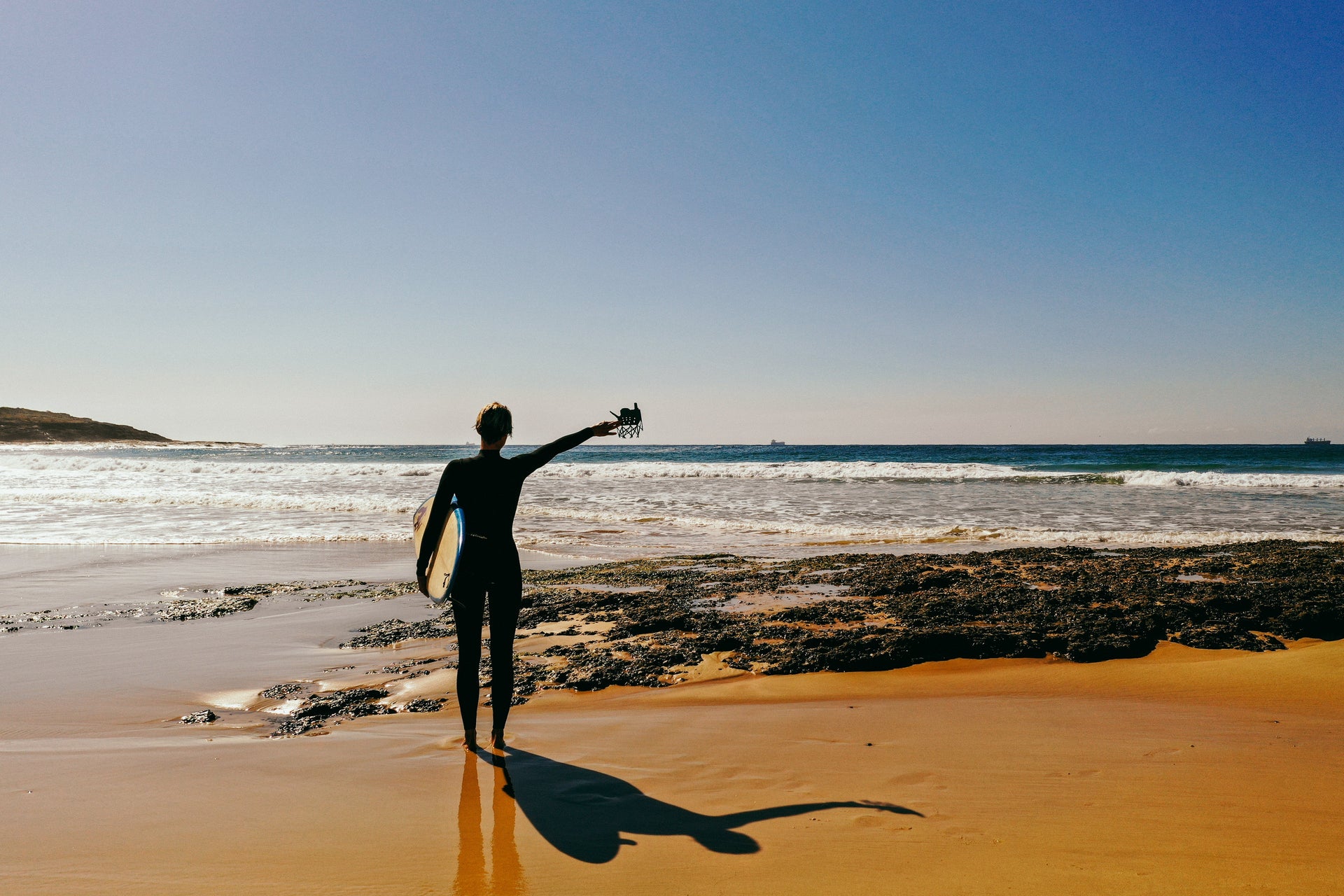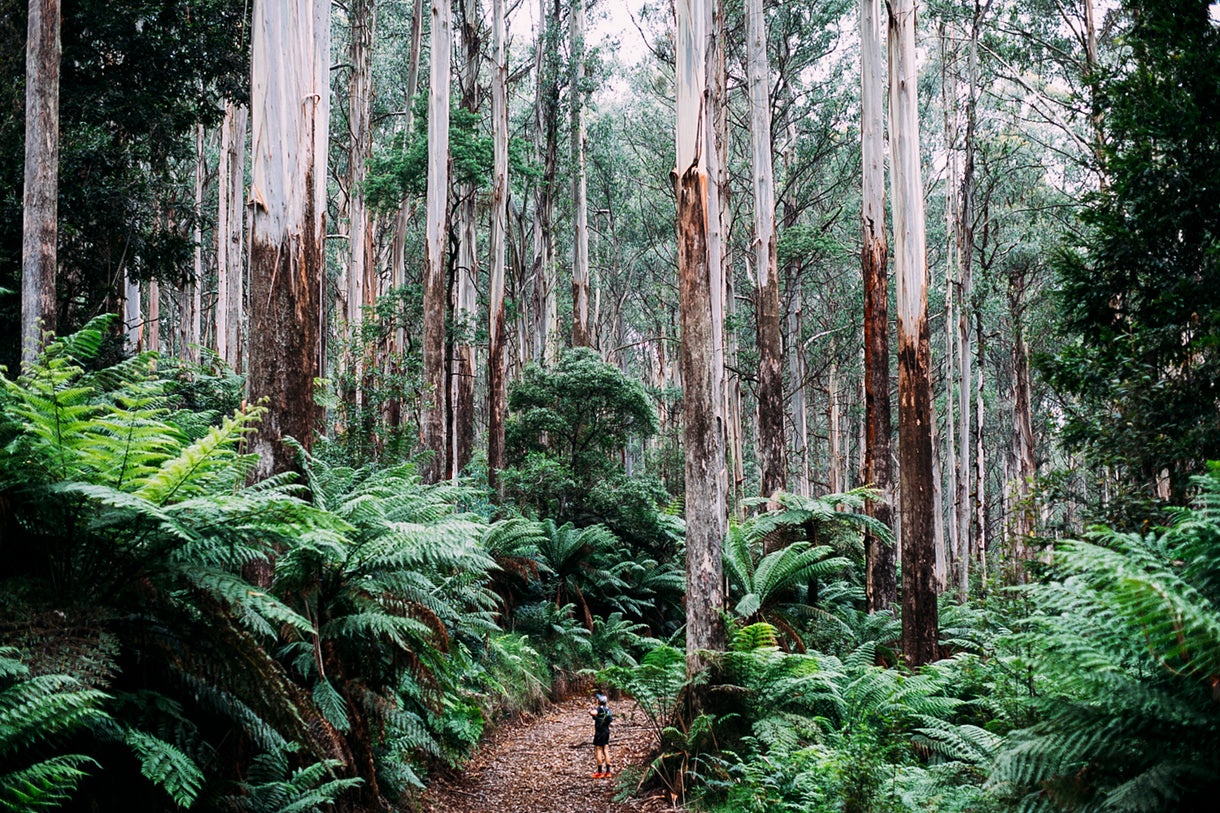Nowhere in Australia currently seems off limits to the gas industry.
In a sign of the dangerous bind Australia finds itself right now, two offshore gas projects on either side of the country are being planned for coastlines so iconic, so sensitive both environmentally and culturally, that the idea of them being turned into working gas fields seems like a front-page story from the Betoota Advocate.
 The Ningaloo Coast, Western Australia. Photo: Chris Gurney.
The Ningaloo Coast, Western Australia. Photo: Chris Gurney.
On one side of the country you have Ningaloo. A World Heritage-listed marine wilderness off the West Australian coast, Ningaloo is home to whales, whale sharks, and a booming tourism industry. It’s where the red dirt of the vast Australian interior meets the even vaster crushed sapphire sparkle of the Indian Ocean. Novelist, Tim Winton has brought the area to life in his books and defended it in the real world from development creep.
“Humans yearn for places of respite, opportunities to be free from the ugly madness of the corporate world,” he wrote in The Monthly. “We need to know there are still some precious sites left intact, ecosystems whose richness, scale and enduring health afford us hope for the future, even if we never get the chance to visit them ourselves. For our own sanity and honour we want to believe there are some habitats we won’t destroy, places so special they’ll never be offered up to the maw of industrialisation. Not now. Not ever. I believe Ningaloo is one of those places.”
And yet when the Australian Government announced their new oil and gas exploration acreages earlier this year, a huge area of ocean adjacent to Ningaloo, Shark Bay and the Abrolhos Islands was included in the carve-up, much to the disbelief and horror of anyone who’d been there and plenty who hadn’t. To develop this area for gas production would require years of seismic blasting, tormenting the larger marine animals, eviscerating the smaller.
“For our own sanity and honour we want to believe there are some habitats we won’t destroy. Not now. Not ever” – Tim Winton.
On the other side of the country, you have Sydney. The biggest city in Australia, and one of the most iconic coastal cities in the world. Despite being home now to five million people, its coastal fringe remains remarkably vibrant. But not even Sydney is safe from gas prospecting. The PEP 11 exploration zone stretches along the coast from Sydney north to Newcastle and is well down the road of being developed as a working offshore gas field. Ask Sydneysiders about PEP 11 however and you’ll be met with an incredulous, “Huh? Straight out there?” PEP11 has been hiding in plain sight for a decade. The quiet creep of the gas industry has been happening around the Australian coast for a long while now, over the horizon and in remote, unpopulated areas like the Timor Sea and Bass Strait. But the gas industry has become more visible and certainly more brazen of late.
 Newcastle, New South Wales. A still from short-film 'South Fish'. Photo: Jarrah Lynch.
Newcastle, New South Wales. A still from short-film 'South Fish'. Photo: Jarrah Lynch.
Nowhere in Australia seems off limits to the gas industry, even Canberra. As the COVID pandemic gripped Australia earlier this year, the Federal Government announced the formation of a National COVID Commission to advise on Australia’s road to economic recovery. There seemed to be only one road, however. The hand-picked Commission was stacked with gas executives – it’s Chairman was Deputy Chairman of his own gas company – and it was unsurprising when they soon began spruiking a “gas-led recovery” that involved billions of dollars of taxpayer dollars underwriting gas infrastructure. The super-charging of the gas industry would lock in decades of carbon emissions. Conflict of interest calls were summarily brushed aside, as were calls to use this opportunity to invest in a renewable energy future. A Green New Deal. But how does the saying go? When all you’ve got is a hammer, every problem looks like a nail.
Gas is a last play for the fossil fuel industry. It’s being rebranded as a “transition fuel” that sits between a fossil fuel past and a renewable energy future. But gas is a fossil fuel, and a dirty one at that. When you extract it you release fugitive methane emissions that are 80 times more potent than CO2 as a greenhouse gas. When you extract it by fracking you bring poisons to the surface, into the soil and into aquifers. And when you extract it in the quantities Australia is you have a real problem, both for the environment and the climate.
Earlier this year Australia became the largest exporter of liquid natural gas in the world. Australia exports roughly three-quarters of the gas it produces. Back in 2015, an export hub at Gladstone, Queensland opened and connected the east coast gas market to the Asian market. Exports tripled, but instead of domestic gas prices coming down, they also tripled. The cheap gas was all sailing off to Asia, and it created the farcical situation where Australia had to import back the same gas it had just exported. In the years since the gas lobby have used this artificial shortage to push for new gas fields to be opened up.
And so Australia finds itself at a crossroads. From Ningaloo to Sydney, we are facing a wholesale expansion of the gas industry at a time when it’s not only uneconomic, but unconscionable. The window for climate action is closing fast. A supercharged gas industry will slam it shut. It’s unconscionable because the future alternative is already here. Renewable energy – farmed solar, rooftop solar, wind and hydro – already generates 24% of Australia’s National Energy Market despite the policy deck being stacked in the favour of fossil fuels. The market has spoken. Renewables are already the cheapest form of energy generation and there are few countries on earth better set up to become a renewable energy powerhouse. Australia could become, “the Saudi Arabia of renewable energy” but instead we are being taken down a dead end by the fossil fuel lobby. This is a critical time, and the decisions made now will echo into the decades ahead.
Three of this year’s Patagonia Australia’s environmental grantees are directly engaged in the fight against gas industry expansion. Save Our Coast are based in Newcastle and have been campaigning against the development of the PEP11 exploration zone. In late 2019 Save Our Coast successfully managed to prevent another round of 3D seismic testing and are now lobbying to have the entire PEP11 permit scrapped. Environment Victoria meanwhile have just collected over 10,000 submissions against a proposed gas import terminal inside Victoria’s Westernport Bay, which threatens a delicate marine environment with chlorinated run-off seven degrees colder than the ambient seawater. Finally, Friends of the Earth are over in the Otway Basin, where just beyond the iconic Twelve Apostles an offshore gas field is powering ahead on a fresh round of drilling approvals.
“Australia could become, ‘the Saudi Arabia of renewable energy’ but instead we are being taken down a dead end by the fossil fuel lobby.”
Taking on the might of the oil and gas industry in Australia is a mountain to climb. On sheer scale, these grassroots groups barely register against the might of the fossil fuel lobby. The gas industry have bottomless pockets and lobby groups who move in the shadows. They have a direct line to those in power and they have energy policy stacked in their favour. What they don’t have however are the people. As this last big gas play is going down, the tide of public opinion is turning against them. As climate action becomes more urgent, and as the gas industry becomes increasingly desperate, threatening whole ecosystems, they’re being called out and confronted by coastal communities right around Australia. And as big as they are, they can be toppled. The Fight For The Bight proved that.
 Patagonia Global Sports Activist Belinda Baggs, while filming 'South Fish'. Photo: Jarrah Lynch.
Patagonia Global Sports Activist Belinda Baggs, while filming 'South Fish'. Photo: Jarrah Lynch.
Tim Winton, in his efforts to save Ningaloo, has seen this movement taking shape. “And there are thousands more like them,” he told The Monthly, “Australians who are only just hearing of the place now, thousands who are sick of watching their futures sold out to Big Gas, Big Oil, Big Business and Big Man politics. People who cry, ‘No more – enough of this!’”
UPDATE: The future of the PEP11 permit has been listed for debate in Federal Parliament. Now is the time to let your local MP know how you feel about the coast between Sydney and Newcastle being developed as a gas field.
Head over to either Save Our Coast or Surfrider Foundation Australia to send a letter to your local MP today.
Film: Belinda Baggs and Lucia Santiago.
Banner image – Novocastrian Belinda Baggs helps us visualise what our horizons could look like. Photo: Lucia Santiago.
____________________________________________________________________
Author Profile


























































